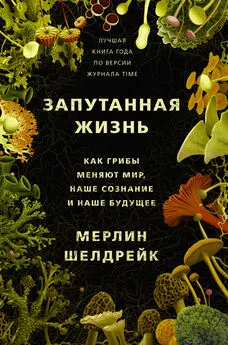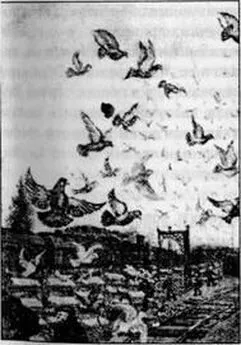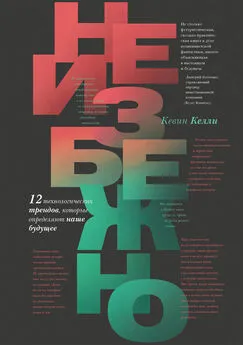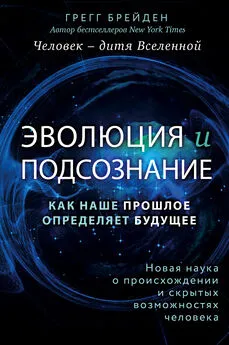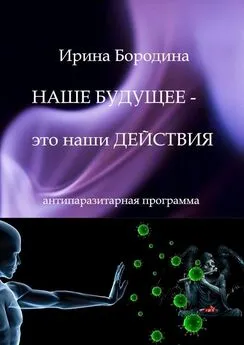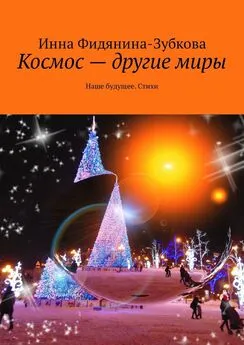Мерлин Шелдрейк - Запутанная жизнь. Как грибы меняют мир, наше сознание и наше будущее
- Название:Запутанная жизнь. Как грибы меняют мир, наше сознание и наше будущее
- Автор:
- Жанр:
- Издательство:Литагент АСТ
- Год:2021
- Город:Москва
- ISBN:978-5-17-122572-8
- Рейтинг:
- Избранное:Добавить в избранное
-
Отзывы:
-
Ваша оценка:
Мерлин Шелдрейк - Запутанная жизнь. Как грибы меняют мир, наше сознание и наше будущее краткое содержание
Талантливый молодой биолог Мерлин Шелдрейк переворачивает мир с ног на голову: он приглашает читателя взглянуть на него с позиции дрожжей, псилоцибиновых грибов, грибов-паразитов и паутины мицелия, которая простирается на многие километры под поверхностью земли (что делает грибы самыми большими живыми организмами на планете). Открывающаяся грибная сущность заставляет пересмотреть наши взгляды на индивидуальность и разум, ведь грибы, как выясняется, – повелители метаболизма, создатели почв и ключевые игроки во множестве естественных процессов. Они способны изменять наше сознание, врачевать тела и даже обратить нависшую над нами экологическую катастрофу. Эти организмы переворачивают наше понимание самой жизни на Земле.
В формате PDF A4 сохранен издательский макет.
Запутанная жизнь. Как грибы меняют мир, наше сознание и наше будущее - читать онлайн бесплатно ознакомительный отрывок
Интервал:
Закладка:
Goward T. 2009a. Twelve Readings on the Lichen Thallus IV – Re-emergence. Evansia 26: 1–6. www.waysofenlichenment.net/ways/readings/essay4 [accessed October 29, 2019].
Goward T. 2009b. Twelve Readings on the Lichen Thallus V–Conversational. Evansia 26: 31–37. www.waysofenlichenment.net/ways/readings/essay5 [accessed October 29, 2019].
Goward T. 2009c. Twelve Readings on the Lichen Thallus VII – Species. Evansia 26: 153–62. www.waysofenlichenment.net/ways/readings/essay7 [accessed October 29, 2019].
Goward T. 2010. Twelve Readings on the Lichen Thallus VIII – Theoretical. Evansia 27: 2–10. www.waysofenlichenment.net/ways/readings/essay8 [accessed October 29, 2019].
Gregory PH. 1982. Fairy rings; free and tethered. Bulletin of the British Mycological Society 16: 161–63.
Griffiths D. 2015. Queer Theory for Lichens. UnderCurrents 19: 36–45.
Griffiths R, Johnson M, Carducci M, Umbricht A, Richards W, Richards B, Cosimano M, Klinedinst M. 2016. Psilocybin produces substantial and sustained decreases in depression and anxiety in patients with life-threatening cancer: A randomized double-blind trial. Journal of Psychopharmacology 30: 1181–197.
Griffiths R, Richards W, Johnson M, McCann U, Jesse R. 2008. Mystical-type experiences occasioned by psilocybin mediate the attribution of personal meaning and spiritual significance 14 months later. Journal of Psychopharmacology 22: 621–32.
Grman E. 2012. Plant species differ in their ability to reduce allocation to non-beneficial arbuscular mycorrhizal fungi. Ecology 93: 711–18.
Grube M, Cernava T, Soh J, Fuchs S, Aschenbrenner I, Lassek C, Wegner U, Becher D, Riedel K, Sensen CW, et al. 2015. Exploring functional contexts of symbiotic sustain within lichen-associated bacteria by comparative omics. The ISME Journal 9: 412–24.
Gupta M., Prasad A, Ram M, Kumar S. 2002. Effect of the vesicular – arbuscular mycorrhizal (VAM) fungus Glomus fasciculatum on the essential oil yield related characters and nutrient acquisition in the crops of different cultivars of menthol mint ( Mentha arvensis ) under field conditions. Bioresource Technology 81: 77–79.
Guzmán G, Allen JW, Gartz J. 1998. A worldwide geographical distribution of the neurotropic fungi, an analysis and discussion. Annali del Museo Civico di Rovereto: Sezione Archeologia, Storia, Scienze Naturali . 14: 189–280. www.museocivico.rovereto.tn.it/UploadDocs/104_art09-Guzman%20&%2 °C.pdf [accessed October 29, 2019].
Hague T, Florini M, Andrews P. 2013. Preliminary in vitro functional evidence for reflex responses to noxious stimuli in the arms of Octopus vulgaris. Journal of Experimental Marine Biology and Ecology 447: 100–5.
Hall IR, Brown GT, Zambonelli A. 2007. Taming the Truffle . Portland, OR: Timber Press.
Hamden E. 2019. Observing the cosmic web. Science 366: 31–32.
Haneef M, Ceseracciu L, Canale C, Bayer IS, Heredia-Guerrero JA, Athanassiou A. 2017. Advanced materials from fungal mycelium: fabrication and tuning of physical properties. Scientific Reports 7: 41292.
Hanson KL, Nicolau DV, Filipponi L, Wang L, Lee AP, Nicolau DV. 2006. Fungi use efficient algorithms for the exploration of microfluidic networks. Small 2: 1212–220.
Haraway DJ. 2004. Crystals, Fabrics, and Fields . Berkeley, CA: North Atlantic Books.
Haraway DJ. 2016. Staying with the Trouble: Making Kin in the Chthulucene . Durham, NC: Duke University Press.
Harms H, Schlosser D, Wick LY. 2011. Untapped potential: exploiting fungi in bioremediation of hazardous chemicals. Nature Reviews Microbiology 9: 177–92.
Harold FM, Kropf DL, Caldwell JH. 1985. Why do fungi drive electric currents through themselves? Experimental Mycology 9: 183–86.
Hart MM, Antunes PM, Chaudhary V, Abbott LK. 2018. Fungal inoculants in the field: Is the reward greater than the risk? Functional Ecology 32: 126–35.
Hastings A, Abbott KC, Cuddington K, Francis T, Gellner G, Lai Y-C, Morozov A, Petrovskii S, Scranton K, Zeeman M. 2018. Transient phenomena in ecology. Science 361: eaat6412.
Hawksworth D. 2001. The magnitude of fungal diversity: the 1.5 million species estimate revisited. Mycological Research 12: 1422–432.
Hawksworth D. 2009. “Mycology: A Neglected Megascience.” In Applied Mycology . Rai M, Bridge PD, eds. Oxford, UK: CABI, pp. 1–16.
Hawksworth DL, Lücking R. 2017. Fungal Diversity Revisited: 2.2 to 3.8 Million Species. Microbiology Spectrum 5: FUNK-00522016.
Heads SW, Miller AN, Crane LJ, Thomas JM, Ruffatto DM, Methven AS, Raudabaugh DB, Wang Y. 2017. The oldest fossil mushroom. PLOS ONE 12: e0178327.
Hedger J. 1990. Fungi in the tropical forest canopy. Mycologist 4: 200–2.
Held M, Edwards C, Nicolau D. 2009. Fungal intelligence; Or on the behaviour of microorganisms in confined micro-environments. Journal of Physics: Conference Series 178: 012005.
Held M, Edwards C, Nicolau DV. 2011. Probing the growth dynamics of Neurospora crassa with microfluidic structures. Fungal Biology 115: 493–505.
Held M, Kašpar O, Edwards C, Nicolau DV. 2019. Intracellular mechanisms of fungal space searching in microenvironments. Proceedings of the National Academy of Sciences 116: 13543–552.
Held M, Lee AP, Edwards C, Nicolau DV. 2010. Microfluidics structures for probing the dynamic behaviour of filamentous fungi. Microelectronic Engineering 87: 786–89.
Helgason T, Daniell T, Husband R, Fitter A, Young J. 1998. Ploughing up the wood-wide web? Nature 394: 431–31.
Hendricks PS. 2018. Awe: a putative mechanism underlying the effects of classic psychedelic-assisted psychotherapy. International Review of Psychiatry 30: 1–12.
Hibbett D, Blanchette R, Kenrick P, Mills B. 2016. Climate, decay, and the death of the coal forests. Current Biology 26: R563–R567.
Hibbett D, Gilbert L, Donoghue M. 2000. Evolutionary instability of ectomycorrhizal symbioses in basidiomycetes. Nature 407: 506–08.
Hickey PC, Dou H, Foshe S, Roper M. 2016. Anti-jamming in a fungal transport network. arXiv:1601:06097v1 (physics.bio-ph).
Hickey PC, Jacobson D, Read ND, Glass LN. 2002. Live-cell imaging of vegetative hyphal fusion in Neurospora crassa. Fungal Genetics and Biology 37: 109–19.
Hillman B. 2018. Extra Hidden Life, Among the Days . Middletown, CT: Wesleyan University Press.
Hiruma K, Kobae Y, Toju H. 2018. Beneficial associations between Brassicaceae plants and fungal endophytes under nutrient-limiting conditions: evolutionary origins and host-symbiont molecular mechanisms. Current Opinion in Plant Biology 44: 145–54.
Hittinger C. 2012. Endless rots most beautiful. Science 336: 1649–650.
Hoch HC, Staples RC, Whitehead B, Comeau J, Wolf ED. 1987. Signaling for growth orientation and cell differentiation by surface topography in Uromyces. Science 235: 1659–662.
Hoeksema J. 2015. “Experimentally Testing Effects of Mycorrhizal Networks on Plant-Plant Interactions and Distinguishing Among Mechanisms.” In Mycorrhizal Networks . Horton T, ed. Springer International Publishing, pp. 255–77.
Hoeksema JD, Chaudhary VB, Gehring CA, Johnson NC, Karst J, Koide RT, Pringle A, Zabinski C, Bever JD, Moore JC, et al. 2010. A meta-analysis of context-dependency in plant response to inoculation with mycorrhizal fungi. Ecology Letters 13: 394–407.
Hom EF, Murray AW. 2014. Niche engineering demonstrates a latent capacity for fungal-algal mutualism. Science 345: 94–98.
Honegger R. 2000. Simon Schwendener (1829–1919) and the dual hypothesis of lichens. The Bryologist 103: 307–13.
Honegger R, Edwards D, Axe L. 2012. The earliest records of internally stratified cyanobacterial and algal lichens from the Lower Devonian of the Welsh Borderland. New Phytologist 197: 264–75.
Honegger R, Edwards D, Axe L, Strullu-Derrien C. 2018. Fertile Prototaxites taiti : a basal ascomycete with inoperculate, polysporous asci lacking croziers. Philosophical Transactions of the Royal Society B 373: 20170146.
Hooks KB, Konsman J, O’Malley MA. 2018. Microbiota-gut-brain research: a critical analysis. Behavioral and Brain Sciences 42: e60.
Horie M, Honda T, Suzuki Y, Kobayashi Y, Daito T, Oshida T, Ikuta K, Jern P, Gojobori T, Coffin JM, et al. 2010. Endogenous non-retroviral RNA virus elements in mammalian genomes. Nature 463: 84–87.
Hortal S, Plett K, Plett J, Cresswell T, Johansen M, Pendall E, Anderson I. 2017. Role of plant – fungal nutrient trading and host control in determining the competitive success of ectomycorrhizal fungi. The ISME Journal 11: 2666–676.
Howard A. 1940. An Agricultural Testament . Oxford, UK: Oxford University Press. www.journeytoforever.org/farm_library/howardAT/ATtoc.html#contents [accessed October 29, 2019].
Howard A. 1945. Farming and Gardening for Health and Disease . London, UK: Faber and Faber. journeytoforever.org/farm_library/howardSH/SHtoc.html [accessed October 29, 2019].
Howard R, Ferrari M, Roach D, Money N. 1991. Penetration of hard substrates by a fungus employing enormous turgor pressures. Proceedings of the National Academy of Sciences 88: 11281–284.
Hoysted GA, Kowal J, Jacob A, Rimington WR, Duckett JG, Pressel S, Orchard S, Ryan MH, Field KJ, Bidartondo MI. 2018. A mycorrhizal revolution. Current Opinion in Plant Biology 44: 1–6.
Hsueh Y-P, Mahanti P, Schroeder FC, Sternberg PW. 2013. Nematode-Trapping Fungi Eavesdrop on Nematode Pheromones. Current Biology 23: 83–86.
Huffnagle GB, Noverr MC. 2013. The emerging world of the fungal microbiome. Trends in Microbiology 21: 334–41.
Hughes DP. 2013. Pathways to understanding the extended phenotype of parasites in their hosts. Journal of Experimental Biology 216: 142–47.
Hughes DP, Araújo J, Loreto R, Quevillon L, de Bekker C, Evans H. 2016. From so simple a beginning: the evolution of behavioural manipulation by fungi. Advances in Genetics 94: 437–69.
Hughes DP. 2014. On the Origins of Parasite-Extended Phenotypes. Integrative and Comparative Biology 54: 210–17.
Hughes DP, Wappler T, Labandeira CC. 2011. Ancient death-grip leaf scars reveal ant – fungal parasitism. Biology Letters 7: 67–70.
Humboldt A von. 1849. Cosmos: A Sketch of Physical Description of the Universe . London, UK: Henry G. Bohn.
Humboldt A von. 1845. Kosmos: Entwurf einer physischen Weltbeschreibung . Stuttgart and Tübingen, GER: J.G. Cotta’schen Buchhandlungen. archive.org/details/b29329693_0001 [accessed October 29, 2019].
Humphrey N. 1976. “The Social Function of Intellect.” In Growing Points in Ethology . Bateson P, Hindle RA, eds. Cambridge, UK: Cambridge University Press, pp. 303–17.
Hustak C, Myers N. 2012. Involutionary momentum: affective ecologies and the sciences of plant/insect encounters. Differences 23: 74–118.
Hyde K, Jones E, Leano E, Pointing S, Poonyth A, Vrijmoed L. 1998. Role of fungi in marine ecosystems. Biodiversity and Conservation 7: 1147–161.
Ingold T. 2003. “Two Reflections on Ecological Knowledge.” In Nature Knowledge: Ethnoscience, Cognition, and Utility. Sanga G, Ortalli G, eds. Oxford, UK: Berghahn Books, pp. 301–11.
Читать дальшеИнтервал:
Закладка:
